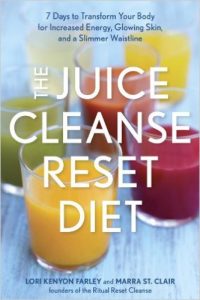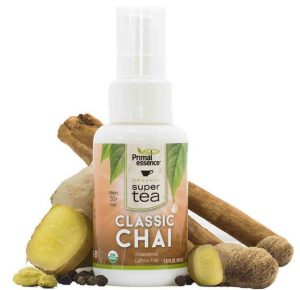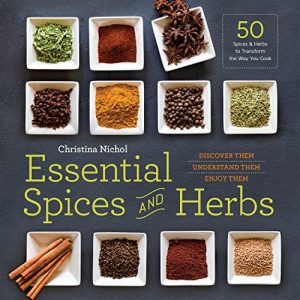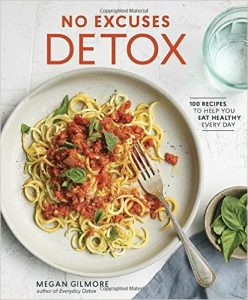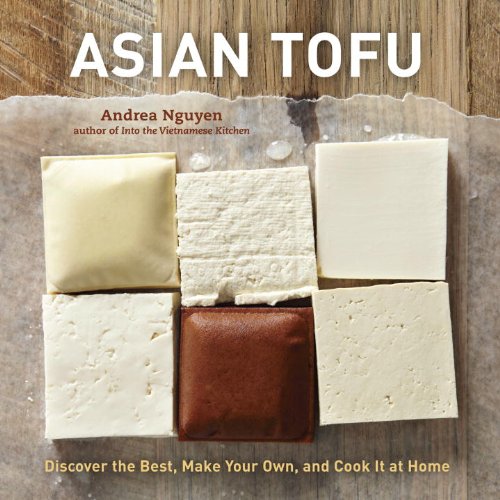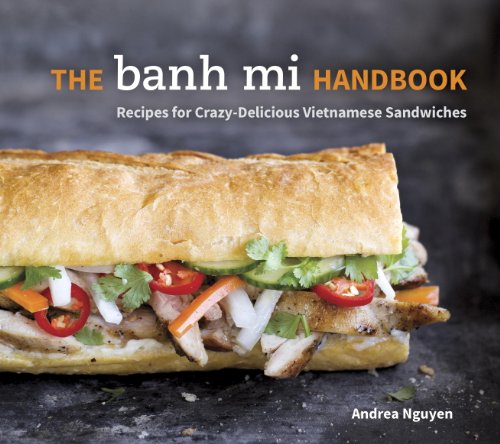Category Archives: Plant Eaters Anonymous
My Take on “Veganism”
Up until a dozen years ago, we’d been innocently and happily eating a whole-foods, sugar-free, “healthy diet” for about three decades; it included low-fat dairy, white meat chicken and fish. But then, my husband “pushed through” on a New York Marathon feeder race, collapsed and was unceremoniously hauled off to a local hospital. That was when we learned that he had plaque on his arteries! I took this as a personal affront to my hard-won nutritional knowledge and culinary expertise.
After listening to my angst-ridden breast-beating, a friend handed me the “Eating” DVD (3rd Revision) – it was a revelation. The interviewees weren’t McDonald addicts or slab-of-beef on the plate types; these were people who’d been eating just like us. And their health profiles were just like ours. Once they embraced a whole-foods, plant-based lifestyle – aka veganism – their health improved: plaque disappeared from arteries, insulin requirements nose-dived, weight slid off…… We were smitten and embraced this new life-style with vigor and enthusiasm.
Today we’re still eating a primarily plant-based diet. We know that we’re healthier with it, that animals suffer less because of it and that the planet is better off (we could trade our Prius for a Humvee and our carbon footprint would still be impressive). But we’ve lost the religiosity. We prefer the term WFPB over Vegan because it is not so loaded. We still use the terms vegan or strict vegetarian in restaurants because plant-based does not compute with servers. But to the rest of the world, we call it a whole-foods, plant-based diet.
Over time, we’ve gotten easier with it. When we travel or dine out – especially at friends’ homes – we expand our options to include wild-caught salmon, mussels, oysters, brook trout and a couple other low-mercury, high omega-three, sustainable species (kudos to the Environmental Working Groups for simplifying this). Blue crab and lobster also make the few-times-a-year list because there are Crab Feast and Lobster Bake traditions on both sides of our families. On occasion, we also eat free-range “humanely raised” eggs. It makes life easier for everyone and, frankly, we welcome these occasional additional options. That said, when we are home, we eat a pretty strict WFPB diet – we like it; it’s easy and it allows us to “regroup” especially after long bouts of travel. When we entertain, it’s almost always a WFPB meal as well; we work hard at delivering luxuriously delicious meals that usually end with a dark chocolate dessert – and, hopefully, make the lack of animal products unnoticeable and irrelevant.
We don’t proselytize and only discuss our food choices when asked; we hope that this low-key approach might make the plant-based concept less off-putting and more appealing. It seems to us that the fewer animal products one eats and the more organic produce one consumes, the better off everyone is (for organic, we shop with the EWG’s Dirty Dozen [actually 20] and Clean Fifteen lists). As Columbia Professor Emeritus Joan Dye Gussow would say to the “Earth Friends” fourth graders: “it’s better for both worlds you inhabit – your body and your planet.”
We are fans of Meatless Mondays, Mark Bittman’s “VB6” (Vegan Before 6 pm), and any other variation that encourages people to dip a toe into this lifestyle. This is not a religion; it is a choice that is a win-win-win for you, for the animals, for the planet. Our philosophy is: just do what works for you; no one is taking notes.
Our Seven-Day Juice Cleanse
We just finished a 7-day cleanse! Our guide throughout was “The Juice Cleanse Reset Diet” by Lori Kenyon Farley and Mara St. Clair. It was a successful experience for both of us – we lost our vacation weight and a bit more. Hopefully the trend will continue. But more important, we hope that it’s given our bodies a rest and perhaps allowed them to start healing some long-time issues. Time will tell, but we both feel pretty good with some increased energy. And it was a real education.
For a week, we ate and juiced only organic produce (except for the Clean 15) so just finding it all at some kind of reasonable price was a bit of a project. Whole Foods, CostCo, Trader Joes and Stop & Shop were our go-to resources. We bought and juiced through most of: six pounds of apples, eight pounds of carrots, four pounds of pears, two pounds of kale, three pounds of mixed baby greens, a pound of baby spinach, two pounds of strawberries, a pound and a half of blueberries, two pounds of sweet peppers, eight cucumbers, ten kiwis, seven mangoes, seven large beets, six heads of romaine, four bunches of celery, a pineapple, a bunch of lemons and limes – and bananas for the smoothies (should have taken a photo of the kitchen counter covered in gorgeous food). I haven’t added up the cost yet, but it was pricey – albeit clearly less than buying these from a juice bar or delivery service, and a lot less than a spa :).
Part of the plan is to drink 16 oz. of water seven times a day and 16 oz. of juice about six times. So if you really don’t like plain water – and I don’t – that was a problem. Coincidentally, as if on cue, UPS delivered a gift – three small pumps of Primal Essence’s super teas (primalessence.com). Each a different flavor. The instructions said just pump a couple of squirts into a glass of water; instant flavor from organic whole plant-extracts! Tasty and healthful. During our cleanse, I switched around among Ginger Zing, Classic Chai, Peppermint Splash and a squeeze of lemon. It really made drinking that much water a lot easier, more pleasant (and even more healthful). When we were going out, I just dropped one in purse for instant interesting water. Each little bottle contains 225 pumps. These are a real find for people who find water just too boring to drink – I want to try the other flavors: Tumeric Tulsi, Vanilla Chai and Lemon Ginger (especially the latter).
We also learned more than we wanted to know about our venerable Omega 1000 juicer that has been sitting on the shelf for, perhaps, a decade. Toward the end of this severe workout, it started showing its age. Trying to control it as it wobbled all over the counter at 3600 rpm was just a little scary. Yet, even out of warranty Omega was there for its customers: we just sent in the broken arm for a free replacement and a tech walked us through the process of re-balancing and explained some of the finer points of cajoling this particular unit. When it’s time for a new one, it’ll definitely be an Omega. Our Vita-Mix performed admirably as usual for the smoothies and also for some of the greens that we had trouble juicing.
Bottom line: a very satisfactory week. We weren’t really hungry. We looked at this as a project and “went with the flow.” But it was a lot of work and we ducked outside engagements as much as possible although we both went to the gym for our usual class and workout. But we definitely both agreed that we will do it again – probably twice a year (or maybe even more). One word of advice for a half a couple trying to do this alone: try to engage your partner. I can’t imagine cleansing while living with someone eating regular food. It just wouldn’t be much fun either.
Essential Herbs and Spices – Discover Them, Understand them, Enjoy Them
By Christina Nichol – Rockridge Press 2015 $18.99 (Amazon $15.82 Kindle $4.99)
While not talking specifically to the plant-based cook, Ms. Nichol provides a useful overview of these critical components for all food preparations – not just for enhanced deliciousness but also for health promotion (almost all have “antioxidant, antiviral, antiviral, or anti-fungal properties”), ceremonial rites, preservation and, historically, that biggie: covering up the taste of foods on the verge of rot. Herbs and spices figure prominently in the age of exploration – when, ounce for ounce, some were as valuable as gold. And the discovery of others changed the flavor profiles of major cuisines.
What are herbs and spices? They are all some kind of plant. If used for medicinal purpose then the entire plant is referred to as an herb. But for culinary uses, the leaf (fresh or dried) is the herb and the stronger, more pungent seed, root, berry, bark, and flower are the spices. Herbs are at their best fresh and tend toward “bitter astringent, tart or savory” while spices are better dried with “earthy, nutty, warm” and pungent profiles.
The author makes a good case for knowing more about the history and contemporary usefulness these small bottles of big flavor stacked in our pantries. She focuses on a selection of 50 popular herbs and spices as well as ten useful blends – helping the cook triage if s/he isn’t ready to stock them all. Each is described along with its history, kitchen methods, healing uses, what foods it complements and what other spices and herbs it pairs with followed by a couple of concrete recipes.
Exploring the magic that these condiments can exert over the most plebeian dishes, may make the temptation to take the plunge to stock them all irresistible. Ms. Nichol also lists the critical herbs and spices of major cuisines: Cajun, Caribbean, Chinese, French, Indian, Italian, Korean, Mexican, Middle-Eastern, North African, Thailand and Turkish. I found this particularly useful when cooking without recipes – just pick a favorite flavor profile then pull out the particular jars that deliver it. Then play.
I have a spice cabinet containing well over a hundred herbs and spices and a pullout with two dozen ethnic mixes – but I still learned a lot from this book:
Whole spices can last up to 4 years, most ground spices up to three years and dried herbs up to two – contrary to prevailing myth to toss all at the one year mark. But always smell and taste your spices first to be sure. Then toast them
Red pepper spices increase in intensity during cooking! Beware
Asafetida is a vegetarian gift with a taste blend evocative of garlic, shallot, onion and leek that imparts that meaty, umani flavor. Love it but never knew why! It’s the dried sap of an herbaceous plant from the fennel family and also a wonderful gift for those with a sensitivity to the allium family.
No Excuses Detox – 100 Recipes to Help You Eat Healthy Everyday
by Megan Gilmore. Ten Speed Press 2017 $19.95 (Amazon $10.70, Spiral $22.50)
This beautiful book landed on my doorstep and I had to read it right away. Yes, I actually do read cookbooks (cover to cover); it’s a glitch in my system and my friends think it is hilarious. This is not a totally Plant-Based cookbook, but it is gluten-free with lots of vegan options – and many that are easily convertible. The goal here is “clean eating.” The author blogs at detoxinista.com which will give you some further ideas about her food and if it will work for you.
The design is attractive and enticing with front and back cover “fold-overs” so you have two easy bookmarks. The easy-to-use recipe layout has multiple circled annotations so you can choose vegan, dairy-free, gluten-free, egg-free, nut-free, soy-free, sugar-free and those with meat protein options are clearly noted as well. She also indicates: 30-min recipes, 15-min prep, kid-friendly, freezer friendly and slow/pressure cooker options (with specific instructions for the Instant Pot). The photos, not one for every recipe but a lot, are beautiful but sometimes don’t match the written descriptions exactly. And there are written descriptions – an interesting lead-in and often very useful notes at the bottom.
Ms. Gilmore is also a fan of food combining – that was big in the ‘70s and I can’t really tell if this is rejuvenation of that same perspective. But she suggests eating only certain foods together – and makes that easy if you follow her recipes and three week-long sets of menus that make sure that the recipes in those menus also follow that food-combining perspective. That concept requires more study on my part…..
I picked a couple recipes to try out. But first – some of the basics that I noted: Ms. Gilmore uses oil (sometimes a lot and sometimes a little) and she uses salt – sometimes with abandon. In many cases, those are easily modified – although she cautions about changing the ratios in baking when using coconut oil or trying to sub EVOO for coconut oil lest you create a major disaster. She also warns that mixing coconut oil and baking powder together creates a perfectly safe green (albeit surprising) product – with St. Patrick’s Day coming up I might just try that.
Skillet Breakfast Hash was my first try. Green cabbage, onions, and green peppers form the base. The recipe suggests topping it with eggs, sprinkling with goat cheddar (all ingredient cheeses in the book are from goat or sheep milk) and finishing in the oven. Since I actually had a couple of free-range, local organic eggs left by a guest, I put two on the hash. And instead of the two ounces of goat cheddar, I finally shredded 1 ounce of Daiya Mozzarella and sprinkled it on the top. The result was tasty although the Daiya was so finally shredded that its presence was unnoticeable. The eggs didn’t add that much so I think I might try this again with some tofu – or nothing.
The next recipes I’ll try are Baked Parsnip Chips, Butternut Mac ‘n Cheese (still looking for the one that really works), Deep Dish Chocolate Cookie and No Bake Brownie Bites.
This book contains some fresh ideas. New recipe concepts seem to be generated in the ether and then appear simultaneously in many books, blogs or sites. So when you read some new thoughts, that’s a good thing.
Asian Tofu
by Andre Nguyen. Ten Speed Press 2012, Large format, hard cover $30 ($23.56 or $12.99 Kindle)
The only book that I owned on making tofu was the “Book of Tofu” by William Shurtleff and Akiko Aoyagi circa 1979. It’s a very yellowed, dense paperback ($2.95 then*) filled with tons of information. But somehow it always intimidated so when I picked up Nguyen’s “Asian Tofu” with lots of big, beautiful photos, graphics and white space (albeit at ten times the price ), I was encouraged to try this again.
Not surprisingly the basic recipe that Nguyen uses is almost the same as Shurtleff’s – she just makes it sound easier. It’s soybeans, water and coagulant with a proper mold and accoutrements – that’s pretty much it. Nguyen begins with a highly detailed Homemade Tofu Tutorial: an immersion in the various types starting with soy milk, then on to silken tofu, tofu pudding, block tofu, seasoned pressed tofu, tea-smoked pressed tofu, white fermented tofu, fresh tofu skin and soy-simmered fried tofu. The rest of the book is devoted to how to use each kind of tofu once you successfully mastered it. Again, the photos are the name of the game here. Seeing the process and knowing what you’re going for makes all the difference. She has encouraged me to try this to see if the result is as good as or even better than the lovely artisanal product produced by The Bridge Company in Middletown, CT. (I was privileged to spend several hours there watching the process – seeing how very minimally processed this product can be.)
Nguyen continues to teach the reader/cook through chapters on Snacks and starters, Main Dishes, Salads, Mock Meats, Buns, Dumplings, Crepes, and Sweets. . She ends with a chapter on Basics that covers stocks, and sauces. Be aware this is not a totally plant-based book. There are many recipes using seafood and meat. But, as in her earlier book, plant-based substitutions are relatively easy and it is a host of basic concepts that she is teaching.
*BTW: The original “Book of Tofu” is still available for $7.23 on Amazon (used $0.1 and up) and a new edition, “Book of Tofu – Protein Source of the Future… Now!,” a larger paperback with photos, updated information and newly designed covers, was published in 2012 ($17.95, available from $8 up). That might be well worth purchasing. Together these two books will tell you all you want, need or wish to know about tofu.
The Banh Mi Handbook – Recipes for Crazy-Delicious Vietnamese Sandwiches
by Andrea Nguyen. Ten Speed Press 2014. $16.99 (Amazon $11.43, or $4.99 Kindle)
Banh Mi sandwiches have been the subject of so many articles and restaurant reviews that they have certainly captured my imagination and my salivary glands. But they are so meat-centric that I just couldn’t figure out how to replicate this described deliciousness within the confines of even a flexible plant-based diet. Nguyen’s small, hard-cover book helped me figure that out. This is by no means a vegetable-forward book; the bulk of the recipe chapters cover all of the main meat, poultry and seafood categories. But, there is a chapter on vegetarian fillings, two on breads and other “holders,” and, probably most important, one on mayonnaise, sauces and pickles which form the flavor profile that makes Banh Mi sandwiches so addictive. So you might find it worth the investment in a Kindle version for the Baked Maggi Tofu, Edamame Pate or the four other vegan fillings or for the flavorings of her meat pates that could be reinterpreted in a mushroom or bean pate.
Why a Plant-Based (aka Vegan) Diet? The films that tell the story
Sometimes it’s hard to tell someone about eating a whole-foods, plant-based diet without sounding like you are proselytizing – a big no, no IMO. So offering a film that says it all in a non-threatening way is a gret way to go. It worked for us. A friend gave us Mike Andersen’s Eating DVD – right on the heels of having read T. Colin Campbell’s The China Study – and that changed the food habits of five or six people.
There are some superb films and DVDs that have been produced recently that make a clear case for a WFPBD. This my list of personal favorites:
Forks Over Knives (2011) created by Brian Wendel, featuring T. Colin Campbell, Caldwell Esselstyn and Neal Barnard
Got the Facts on Milk? (The Milk Documentary) (2011, 2007) by Shira Lane. Effectively questions the health benefits of milk and dairy products. Features T. Colin Campbell, Caldwell Esselstyn and Neal Barnard
Fat, Sick and Nearly Dead (2010) by Joe Cross. A personal documentary of a person with an autoimmune disease taking back his health care and trading in his pills for a juicer.
Fresh (2009) by Ana Jones. Features Joe Salatin, Will Allen, David Ball. Takes a hard look at our food production system and the negative impact of agribusiness. Takes up where Food, Inc. leaves off adding possible solutions.
Eating, 3rd Ed. (2008) a DVD on the RAVE Diet by Mike Andersen (also a book). An earlier version of this film convinced us to change from a whole-foods, sugar & meat-free diet to a total Whole Foods Plant-Based Diet (a bigger change than one might think).
Food Inc. (2008) directed by Robert Kenner. Features Michael Pollack. Champions more compassionate treatment of meat animals, but does not support a plant-based-only diet
Food Matters (2008) by James Colquhoun & Laurentine ten Bosch. Features Charlotte Gerson, Andrew Saul, Dan Rogers, David Wolfe,
Fast Food Nation (2006). Looks at the destructive impact of eating meat on health, animals and the environment
Super Size Me (2004). Morgan Spurlock’s 30-days on a McDonald’s-only diet
Foodmatters
Hello Weight Watchers – where’s the Whole-Foods, Plant-Based Diet Track?
In my pre-WFPBD days, I successfully used the Weight Watchers (dub-dub) program with considerably success. When the weight did not slide off after switching to a vegan diet (aka WFPBD), I again turned to Weight Watchers to trim those stubborn seven pounds. And I was so disappointed to see that this impressive organization had completely overlooked the revolution under its very nose. Yes, there are a significant number of vegan and vegetarian dishes on their website, but there is no support system (and the meetings really are key) for people choosing a vegan or WFPBD.
I contacted Weight Watchers about WFPBD- focused group meetings, and they said that there just wasn’t enough ground-swell for that yet but that it was quite possible to maintain a WFPBD while using the WW on-line program. I don’t think that that is really true – there’s no program just a collection of recipes that happen to be animal-free, and, of course, there aren’t any meetings. A friend is studying WW as part of her MBA program, and believes that they are really quite open to variations on their theme. So what will it take to get them to take notice?
Weight Watchers is, IMO, the best of the national weight-loss brands. So if it were possible to convince them that the ground-swell is happening as we speak, and that it would be advantageous for them to be supportive of a WFPBD, then that influence could begin to manifest across the country in dramatic ways. This is a very powerful group with a strong, committed and loyal fan base – and great reach. What a difference they could make!!
Reference List for Plant-Based (aka Vegan) Gurus
While I don’t agree completely with any of these sources, they are, IMO, all very good and each makes a solid case for his/her slightly different perspective.
T. Colin Campbell, PhD
The China Study (2004)
Caldwell B. Esselstyn, Jr., MD
Prevent and Reverse Heart Disease: The Revolutionary, Scientifically Proven, Nutrition-Based Cure (2008)
Joel Fuhrman, MD
Eat to Live: The Amazing Nutrient-Rich Program for Fast and Sustained Weight Loss, Revised Edition (2011)
Annemarie Colbin, PhD
The Whole-Food Guide to Strong Bones: A Holistic Approach (2009)
Neal Barnard, MD
Dr. Neal Barnard’s Program for Reversing Diabetes: The Scientifically Proven System for Reversing Diabetes without Drugs (2008)
Andrew Weill, MD
Spontaneous Happiness (2011)
Mark Hyman, MD
The Blood Sugar Solution: The UltraHealthy Program for Losing Weight, Preventing Disease, and Feeling Great Now! (2012)
John McDougall, MD
The Starch Solution: Eat the Foods You Love, Regain Your Health, and Lose the Weight for Good! (2012)
Dean Ornish, MD
The Spectrum: A Scientifically Proven Program to Feel Better, Live Longer, Lose Weight, and Gain Health (2008)
Joan Dye Gussow, PhD
Growing, Older – A Chronicle of Death, Life and Vegetables (2010)
For how we got into this mess and what we need to do to get out of it:
David Kessler’s The End of Overeating
Doug Lisle’s The Pleasure Principle
Stewart Brand’s The Whole Earth Discipline
And for the best overall, easy to understand take on WFPBD, I love Julieanna Hever’s Complete Idiots Guide to Plant-Based Nutrition
Reverse Type 2 Diabetes with a Plant-Based Diet?
One in 10 Americans suffer from Diabetes Meillitus Type Two — one in four over the age of 60. 285 billion people world-wide represent a 10-fold increase in 25 years, and one in two will have the disease or a precursor by 2020. Today the annual cost to the US Health care system alone is almost $180 billion – and it will continue to grow to $3.5 trillion in just a decade.
Billions of dollars are spent on hundreds of drugs designed to manage the disease – Alpha-glucosidase inhibitors,Biguanides, Meglitinides, Sulfonylureas, Thiazolidinediones plus injectibles like exenatide, mitiglinide, pramlintide, sitagliptin, saxagliptin….
But still serious complications persist – glaucoma, cataracts, kidney disease, heart attacks, hypertension, hearing loss, gum disease, gastroparesis, ketoacidosis, depression, neuropathy, peripheral arterial disease, stress, stroke, damaged nerves, skin disorders, Hyperosmolar Hyperglycemic Nonketotic Syndrome……
WHAT IF THERE WAS A CURE? A magic bullet that could make all of this go away? Change lives, save billions of dollars, and deep six one of the world’s most prevalent, damaging diseases.
There is! According to a ground-breaking study published in Diabetologia, Type 2 Diabetes can be reversed in one to eight weeks! The secret? A low glycemic load, high-fiber, whole-foods, plant-based diet!
REFERENCES:
Reversal of type 2 diabetes: normalization of beta cell function in association with decrease pancreas and liver triglycerides Diabetologia; DOI 10.1007/s00125-011-2204-7 E. L. Lim & K. G. Hollingsworth & B. S. Aribisala & M. J. Chen & J. C. Mathers & R. Taylor
